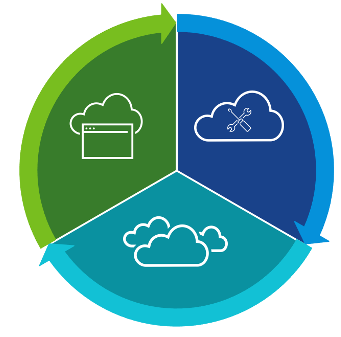Cloud Computing
Cloud Computing
Unlock innovation with the right cloud solutions
Cloud computing has become a key driver of digital transformation, yet many enterprises still face significant challenges in scaling their cloud initiatives.
BTLITC’s Hybrid Cloud Services offer a comprehensive, 360-degree approach to identifying and overcoming these obstacles, helping businesses drive their transformation forward with confidence.
Driving outcome-focused IT modernization and transformation

Optimize your cloud strategy
with Cloud Consulting

Modernize your enterprise
with Private Cloud Services

Choose the right cloud provider
with Public Cloud Services

Transform your IT operating model
with Modern Operations

Start your cloud adoption journey
with Cloud Migration Services

Maximize your IT infrastructure
with Managed Cloud Services
Cloud Computing refers to the delivery of computing services
This offers flexibility, cost efficiency, and scalability, allowing companies to scale up or down based on their needs.
- On-Demand Self-Service: Users can provision and manage computing resources as needed, without requiring human intervention from the service provider.
- Broad Network Access: Cloud services are available over the internet and can be accessed from various devices, including laptops, smartphones, and tablets.
- Resource Pooling: Cloud providers use multi-tenant models to pool resources, offering them to multiple customers in an efficient, scalable manner.
- Rapid Elasticity: Cloud services can scale quickly, enabling businesses to add or reduce resources based on fluctuating demand.

Infrastructure as a Service (IaaS)
IaaS (Infrastructure as a Service) provides users with on-demand access to computing resources like networking, processing power, and storage, without the need for heavy hardware investments or server management. The physical hardware is hosted and maintained by the cloud provider across distributed data centers.
- IaaS offers significant time and cost savings by offloading the setup and maintenance of underlying hardware to the service provider.
- Resources are available on-demand, ensuring there’s no waste from unused capacity and no delays when additional resources are needed.
- With a utility-based pricing model, you only pay for the resources you actually use, optimizing costs and scalability.

Platform as a Service (PaaS)
Platform as a Service (PaaS) is a cloud computing model that provides developers with a complete platform, including the infrastructure, development tools, and solution stack needed to build, test, and deploy applications. Unlike IaaS, which only provides virtualized computing resources, PaaS offers a higher level of abstraction, allowing developers to focus on writing code and building features without managing the underlying hardware, storage, or networking.
- Development frameworks and programming languages
- Integrated development environments (IDEs)
- Database management and storage solutions
- Application hosting and deployment tools
- Scalability and load balancing for high-traffic apps

Software as a Service (SaaS)
Software as a Service (SaaS) is a cloud computing model where software applications are delivered over the internet on a subscription basis. Rather than installing and maintaining software on individual devices or servers, users access SaaS applications through a web browser, with the software hosted and managed by a third-party provider.
- Accessibility: SaaS applications can be accessed from any device with an internet connection, allowing for easy collaboration and remote work.
- Automatic Updates: The service provider handles all software updates, ensuring users always have the latest version without needing to manage patches or upgrades.
- Scalability: SaaS services can easily scale to accommodate more users or increased workloads, making them ideal for growing businesses.
- Cost-Effective: With a subscription-based pricing model, SaaS eliminates the need for upfront investments in software licenses and hardware, offering a pay-as-you-go solution.

Cloud DevOps
Cloud DevOps is the integration of DevOps practices with cloud computing technologies to enhance collaboration, automation, and continuous delivery in software development and IT operations.
- Automation: Automates infrastructure provisioning, configuration, application deployment, and monitoring to increase efficiency and reduce manual errors.
- Continuous Integration & Continuous Deployment (CI/CD): Streamlines the process of integrating code changes and deploying them to production in real-time, improving software quality and delivery speed.

Automation in Cloud Computing
utomation in cloud computing refers to the use of technology to perform tasks with minimal human intervention, streamlining workflows and improving efficiency in managing cloud infrastructure, applications, and services. Automation reduces manual effort, minimizes human errors, and accelerates processes like provisioning, scaling, and deployment.
Benefits
- Increased Efficiency
- Cost Savings
- Improved Reliability
- Faster Time to Market
- Enhanced Security









